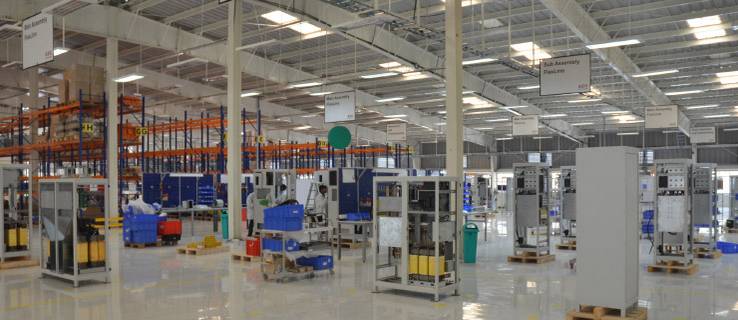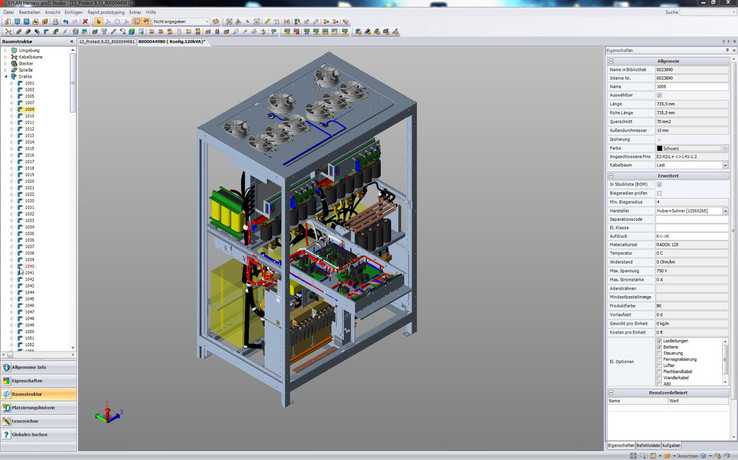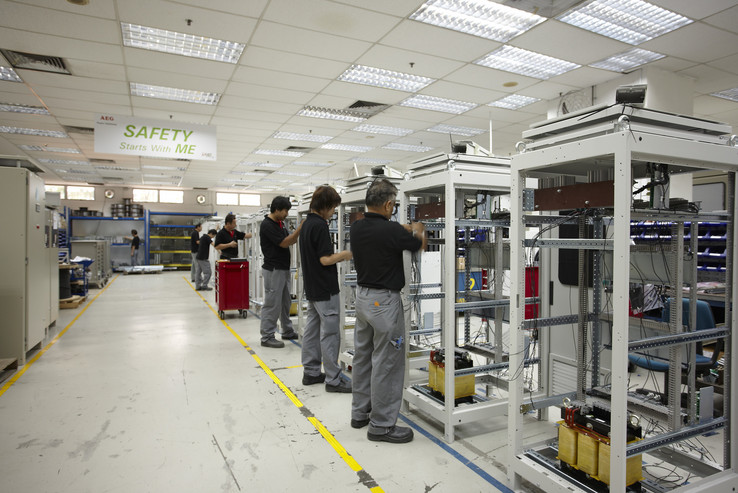Easier and faster planning
AEG Power Solutions (AEG PS) uses EPLAN Harness proD to simplify their wire harness planning.
Wire harnesses offer a variety of advantages: optimised space usage with lower installation space needed for the wiring, entire wiring systems can be installed faster, lower risk of incorrect wiring due to the pre-assembly that takes place, better protection of the installation and finally a tidy look in the interior of a device. AEG Power Solutions has combined these values in an efficient manner to plan wire harnesses. The company integrated EPLAN Harness proD seamlessly into the existing software environment during construction and development. Olaf Linke from Component Engineering summarises: "Today, we are working considerably faster and more comfortably."AEG Power Solutions is based in Belecke / Germany. Solar inverters and uninterruptible power supplies (UPS) are two types of products that they manufacture. Both of these are largely standardised products with a small proportion of customer-specific variants. For this reason, AEG PS has always been using the advantages of standardised wire harnesses during electrical installation. Using EPLAN Harness proD, the company has managed to achieve greater levels of efficiency, especially when developing new series and technically adapting existing ranges. If Olaf Linke needed five or six weeks for a project a few years ago, it now takes between just one and one and a half weeks to complete it. But this is what the developer excites most about the software: "Adaptations can be carried out easily in a project and no time is lost. If cable guides or individual devices are changed, I just place the connecting point wherever I need it to be." The software offers an intuitive point and click method in the three-dimensional space which allows the user to do this. Wire harnesses provide space and order in electrical devices. At AEG PS, EPLAN Harness proD is used for all the wiring in an uninterruptible power supply (UPS). Due to the larger cross-sections of cables designed to carry higher electrical loads, the assembler supplies the power cables separately. "If we were to bind them together with the other components, they would be too heavy and would be difficult to install", explains Linke. In this respect, AEG works consistently, but it commissions an external partner to attach only the thin control cables to a nailboard and form them into wire harnesses after the planning phase is complete. These can consist of up to 100 single wires and in the case of a UPS, they normally connect the control and measurement analysis boards together. They are built into a tension frame in the uninterruptible power supply. As this can be folded out, the cables in this area are longer. The manufacturer of the wire harness can export the data on their length directly in the form of a control file in the wire and cable assembly devices. This increases their productivity and conserves resources, as no lengths need to be indicated. The software additionally helps to automatically calculate supply times and the materials needed in the form of bills of material. Three-dimensional wire harness files are also converted automatically into two-dimensional manufacturing diagrams in a ratio of 1:1; these can then be used for the nailboard or in a reduced size for service documentation. Planning by function groups A look into the interior of a UPS from AEG PS shows that the wire harnesses always encapsulate specifically defined function areas. For example, this may be a ventilator module. For this reason, a device is divided up into functions at the beginning of the planning phase. This is also the case for the solar inverter business area. Work can start with EPLAN Harness proD as soon as the finished model has been obtained from the mechanic and the circuit diagram has been obtained from the electrician. "Then I can start", says Linke and he talks about close cross-departmental coordination - e.g. concerning aspects of EMC. If adaptations are necessary in such a case, Linke automatically receives the new construction diagrams and corrects the wire harnesses. In the past, a new device was first designed both mechanically and electrically. The plan was then used to create a prototype in which the wiring was installed by hand and all the information on the cable types, lengths and connecting pieces were transferred into a bill of materials. "This all took place in an Excel table, which became the basis for the wire harnesses", Linke remembers. If changes occurred in a project, this would always lead to delays. Linke describes: "If mechanical changes were needed for sheets, these had to first be ordered and then built." This normally resulted in delays lasting several days until the project could continue. Naturally, optimisation and constructive adaptations also frequently took place in development projects. Directly use construction dataWhen constructive changes need to take place nowadays, AEG Power Solutions works on them with Solid Edge. The new 3D model is brought into the wire harness planning and is adapted with a few clicks of the mouse. The wire harness software offers comprehensive openness for import and export of third-party systems in construction, administration and manufacturing. A clear advantage that AEG PS is also using with its connection to Solid Edge – in principal, data from various MCAD systems can be easily transferred. This means that project optimisation can be carried out very well and in a highly efficient manner. "Development takes place much faster these days." A further advantage of EPLAN Harness proD: Alongside the actual device functionality, the time-saving and more comfortable working manner that the software provides allows any production improvements to be integrated into development much more easily. This increases the manufacturing productivity late in the series production. This productivity counts in the global market as well. AEG Power Solutions supplies its systems internationally. The EPLAN software gives them a big advantage in that uniform documentation is made available as "this can be used by our colleagues in countries such as India". The subsidiaries abroad can also use the data to find partners locally to manufacture wire harnesses. The AEG Power Solutions head office in the Belecke district of Warstein also works with an external cable assembler. In this way, AEG PS achieved a globally uniform manner of connecting the systems together. This also enables the interior of the system to make a good impact. Linke emphasises: "The installation makes the first impression. If I open up a device and it’s a mess of wires inside, this doesn't give me a good impression of the manufacturer." He also highlighted the importance of wire harnesses in transport safety. If the components are properly secured, they cannot be shaken around during transport. This prevents contacts or connections from being torn out of their proper positions." This being so, wire harnesses are an essential part of the robustness and the quality that AEG offers. Author: Thorsten Sienk
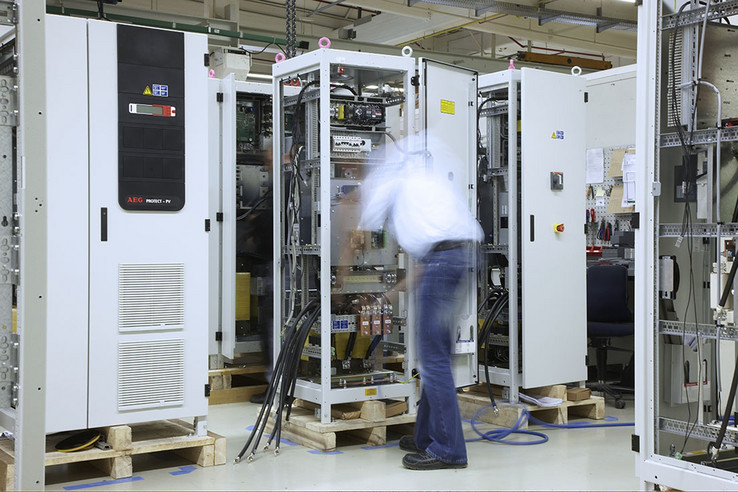
Among the products produced by AEG Power Solutions at its Belecke site are solutions for uninterruptible power supply. Fully bound harnesses make installation easier.
(Source: AEG Power Solutions)
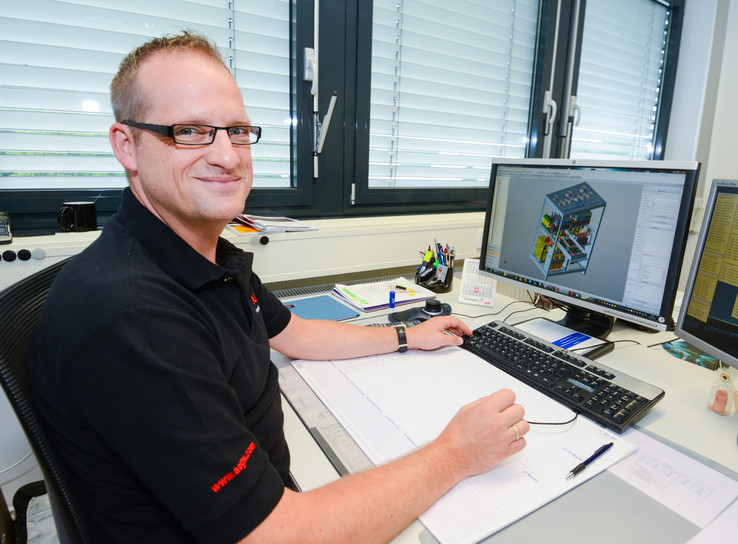
EPLAN Harness proD helps Olaf Linke to save a lot of time when he's planning harnesses.
(Source: T. Sienk)
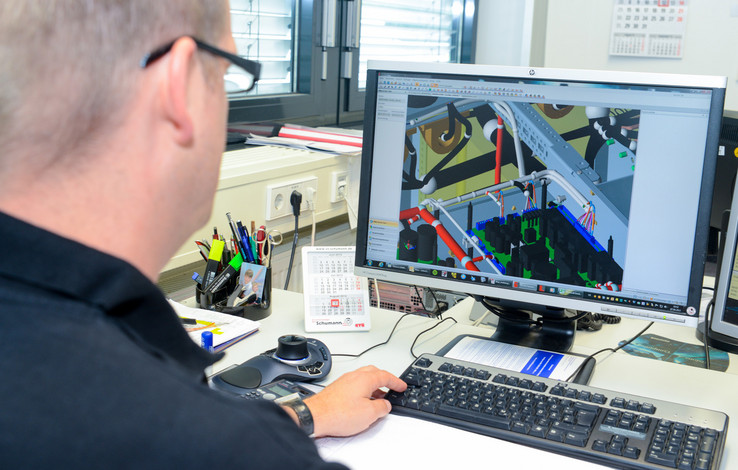
EPLAN Harness proD helps Olaf Linke to save a lot of time when he's planning harnesses.
(Source: T. Sienk)


